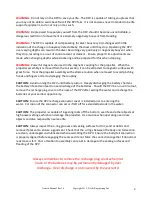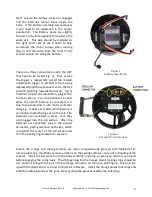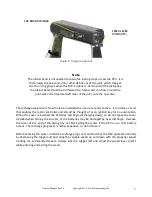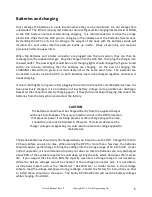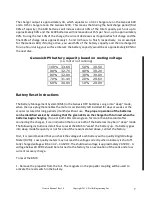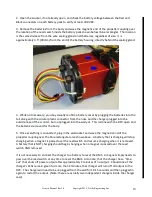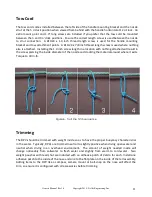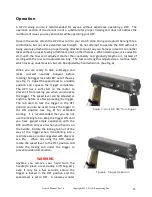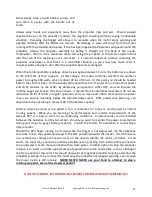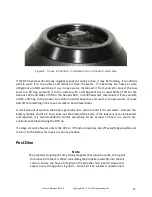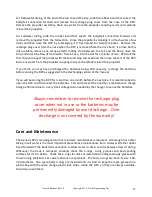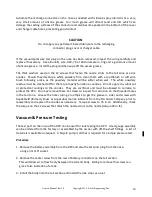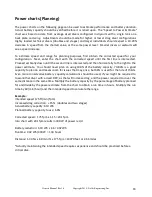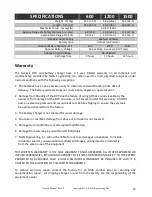
Genesis Manual Rev1.6 Copyright 2018, Nellis Engineering, Inc.
13
will typically wrap around behind a diver and
spin them in circles with the handle out of
reach.
Always keep hands and equipment away from the propeller inlet and exit. Should enough
resistance be put on the propeller rotation, the magnetic coupling will slip causing a noticeable
vibration. Releasing the trigger will allow it to recouple when the motor stops spinning and
operate normally after the blades are cleared. No damage or wear will result from the motor
running with the propeller decoupled. If line has been ingested and becomes wrapped around the
propeller, remove the propeller assembly by pulling it straight out the back of the nozzle.
Underwater, there is more resistance when removing the propeller as the water needs to flow
into the area of the coupling as it is removed. It is recommended you practice removing the
propeller underwater a few times in a controlled situation so you know how much force is
required, before having to do it after the propeller becomes entangled.
When the combined battery voltage drops below approximately 57 volts, the batteries are down
to the final 10% of their capacity. At this voltage, the motor controller will limit the scooter's
power to roughly 300 watts, which is about 40 lbs of thrust. At this point you should be headed
back to the shore or boat. On the Genesis 600 you will have 5-7 minutes of run time at that power
and 10-15 minutes on the 1200. By decreasing you speed on either DPV, you can increase the
runtime to get you back to the shore or boat. It should also be noted that most divers do not use
more than 40 lbs of thrust in regular operation, and you may never notice the reduction in power
if you are already operating below the reduced power level. With proper dive planning, you
should never be operating in the last 10% of the battery capacity.
While scootering around at top speed is fun, it consumes 5-7 times as much power as normal
cruising speeds. While you are learning the performance and runtime characteristics of the
Genesis DPV, it is best to do it in non-challenging conditions. A data recorder can be installed
between the batteries and the tail section, should you want to monitor the power consumption
during your dives, to gauge battery capacity. Consult the factory for assistance in connecting a
data recorder.
Should the DPV begin running on its own while the trigger is not depressed, the first response
should be to turn the speed adjust lever to the OFF position (towards the nozzle). If it continues to
run, remove the recharge connector cover on the nose to disable the motor controller. In salt
water, the cover may need to be partially installed over 3 pins (Fig. 9) to interrupt the connection
since saltwater is much more conductive than fresh water. Another option to stop the propeller
rotation is to insert a non-life-support piece of equipment into the nozzle inlet, such as a liftbag or
line from a spool or tow cord. This should decouple the magnetic propeller coupling and allow the
propeller assembly to be removed by hand once the propeller has stopped spinning, even though
the motor inside is still running.
NEVER NEVER NEVER use your hand to attempt to stop a
rotating propeller, even at the slowest speed !!!
IF THE DPV CANNOT BE CONTROLLED, SEPARATE YOURSELF FROM IT IMMEDIATELY!




